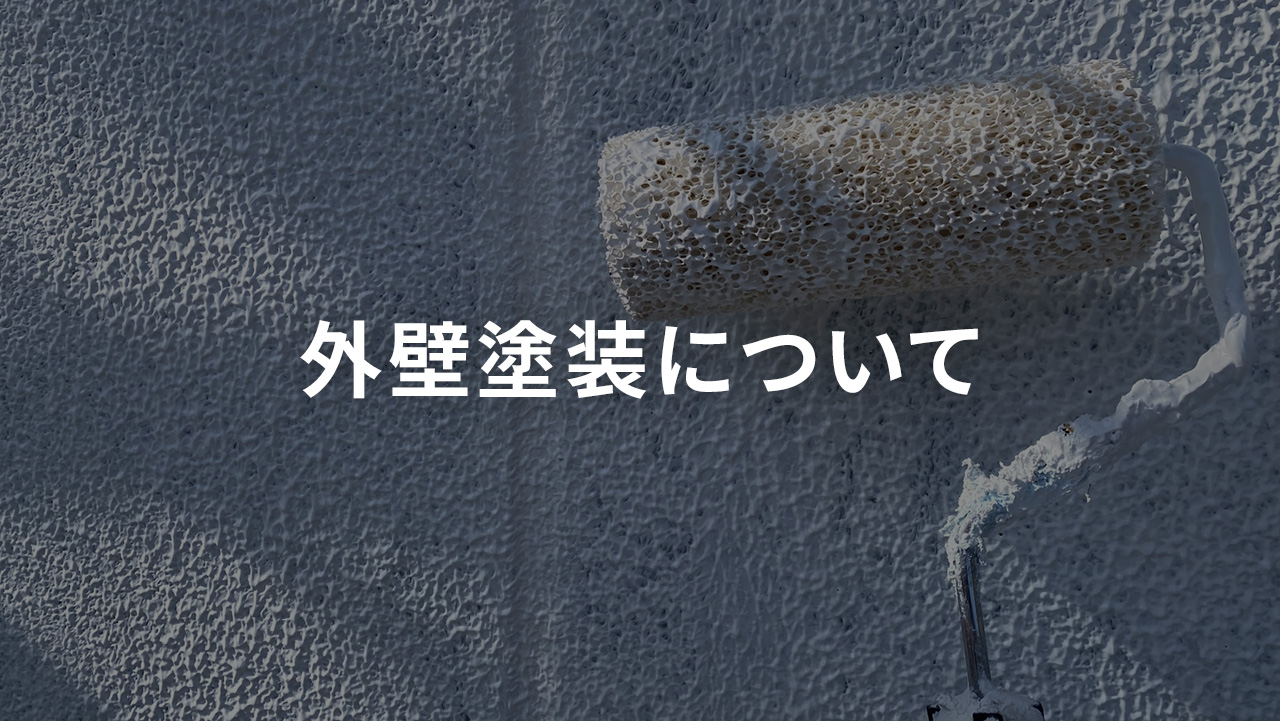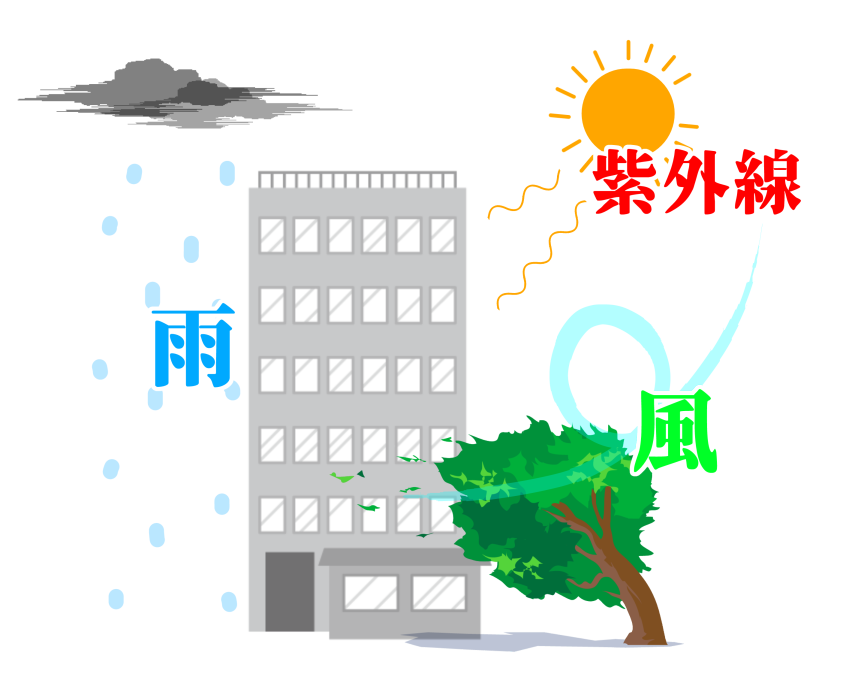お知らせ・お役立ち便覧 NEWS
化学用語解説
2017.06.02
外壁塗装について

目次
何故外壁に塗装するのか
外壁塗装とは、その漢字の通り、建物の外側の壁に塗料を塗ることです。
外壁塗装を施す目的は大きく2つあります。
①建物の見た目をよくするため
素地の色とは異なる色を、好きな配色でデザインできるのが一つのメリットです。
雰囲気を変えたいときも、色を変えるだけで違う印象になるので、素地を変えなくて済みます。
また、歳月が経って色が褪せてきてしまっても、塗装を新しくすれば見た目を元の状態に近く戻すことができます。
②建物を雨風や太陽光から守るため
塗装の塗膜によって、外壁から雨水が侵入することを防ぐことが一番の目的です。

月日が流れ、塗装が劣化してくると塗膜も剥がれてきたり、ひび割れてしまったりするため、定期的なメンテナンスが必要です。
塗装の劣化を放置するとその塗膜が弱くなったところから雨水が入ったり、紫外線に曝されたりして建物自体の痛みが早くなってしまいます。
他にも、塗料によっては防カビ機能がついていたり、遮熱効果があったりと、外壁塗装の効果は見た目だけではないのです。
外壁塗装に使われる塗料の種類
外壁塗装に使われる塗料は、耐久性と価格の違いによって、主に5種類に分けられます。
アクリル塗料
塗料の中では最もコストが安いですが、耐久性が劣り、およそ5~7年程度で塗り替えが必要になります。
費用を安く抑えたい場合、あるいは数年以内に取り壊すことが決まっている建物の場合に採用されることが多い塗料です。
ウレタン塗料
ウレタン塗料はアクリル塗料に続いて安価な塗料です。メンテナンスが容易で、かつ対薬品性や密着性が高いので、以前は主流の塗料でした。
しかし耐久性の持続力が短く、シリコン塗料と比べるとコストパフォーマンスが劣ること、紫外線に弱いこと、防汚性に欠けることなどから、以前に比べ使用量は減ってきています。
シリコン塗料
アクリル樹脂にシリコンが入っているものをシリコン塗料と呼びます。
アクリル塗料やウレタン塗料よりも耐久性に優れ、かつコストパフォーマンスもよく、実績も多いことから現在主流となっている塗料です。
フッ素塗料
フッ素塗料は、現在主に使われている塗料の中で、最も耐久性に優れた塗料であるとされています。
耐久性の他にも、耐熱性、防汚性、防水性に優れ、長期の耐久性が求められる大型のビルなどで使用されることが多い塗料です。
しかしその耐久性の強さゆえ、最も高額なので一般家庭で使われることは多くありません。
ラジカル塗料
別名「ハイブリット塗料」とも呼ばれます。
2012年ごろから登場した塗料で、まだ実績は少ないため注意は必要ですが、耐久性があり高性能のわりにコストが安いので注目されています。
今まで紹介した他の塗料は全て、原料となる樹脂の名前で呼ばれていましたが、これはそうではありません。
そもそも、「ラジカル」とは、「ペアになっていない電子」をもつ原子や分子、イオンのことを言います。
通常原子や分子、イオンの電子はペアになっているのですが、これはそうではなく、だからこそ電子がペアになれる電子を探している状態です。
塗膜上で紫外線や水、酸素などによってラジカルが発生してしまうと、塗膜に含まれる電子とペアになってしまい、劣化が早まってしまいます。
しかし、ラジカル塗料には、ラジカルの発生を抑えたり、ラジカルの影響を受けづらくする機能があると言われており、いわば「ラジカル制御型塗料」なのがこのラジカル塗料です。
ラジカルを制御することで、塗料が劣化しづらい状態を保つことができるとされています。
水系塗料と溶剤系塗料の違い
外壁用の塗料には水系と溶剤系があり、希釈剤が水か、シンナー(溶剤)かによってそれぞれ分類されます。
耐久性は、一般的に溶剤系の方が水系よりも高い傾向にあります。
1液タイプと2液タイプの違い
1液タイプは容器のフタをあけてそのまま使うことができますが(希釈することもある)、
2液タイプは別々に梱包されている主剤と硬化剤を混ぜて使うタイプです(希釈することもある)。
2液タイプの方が強固な塗膜を作るので、耐久性に優れている傾向にありますが、価格はやや高くなります。
関連記事
カテゴリーから探す
キーワードから探す